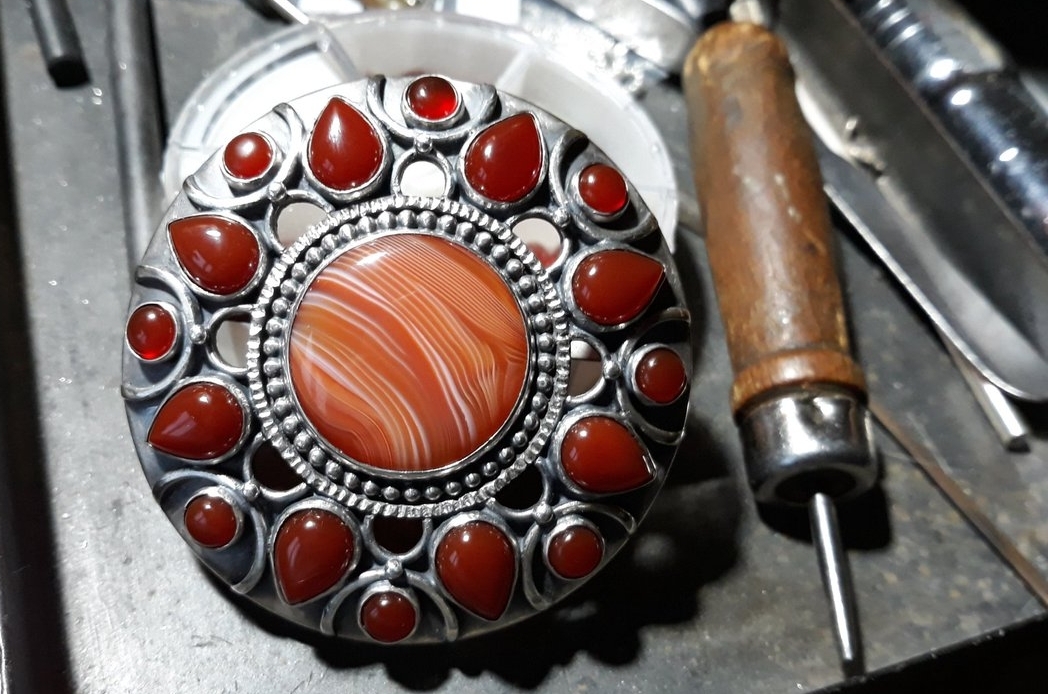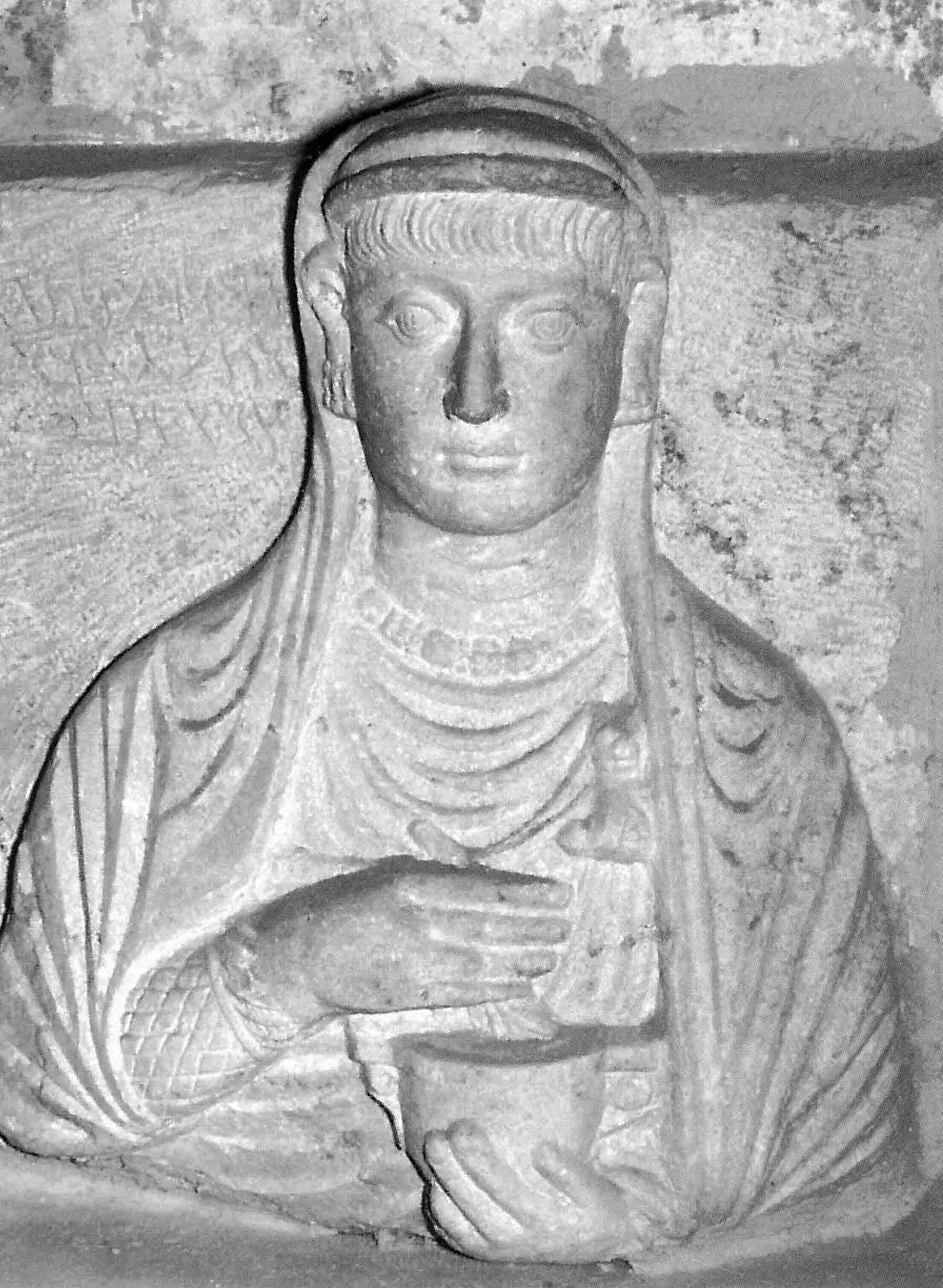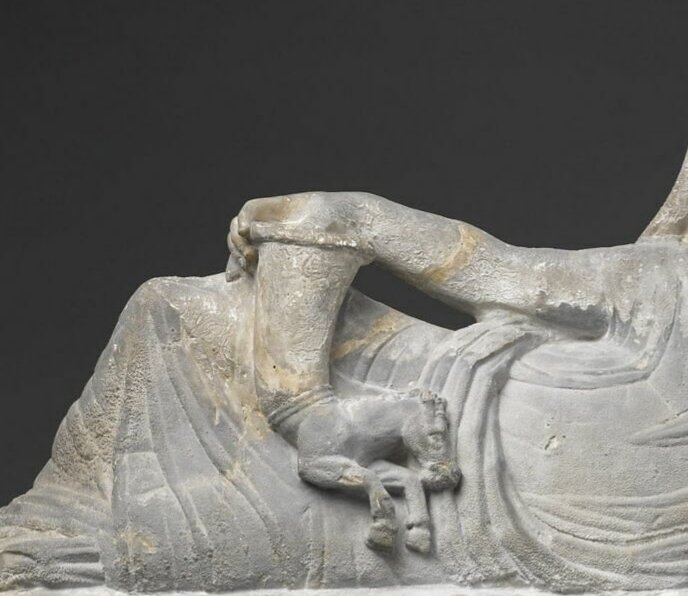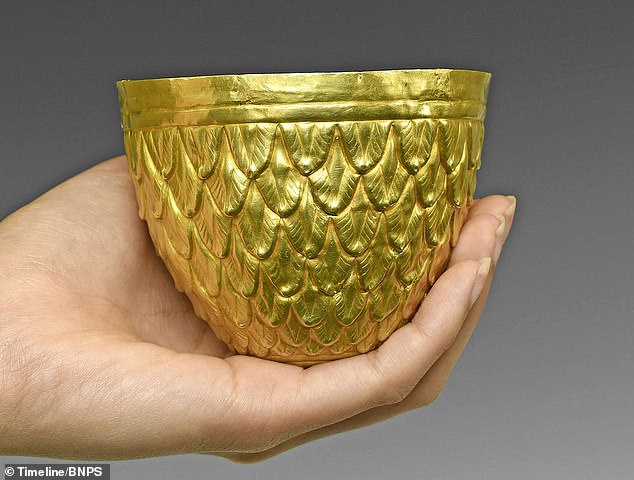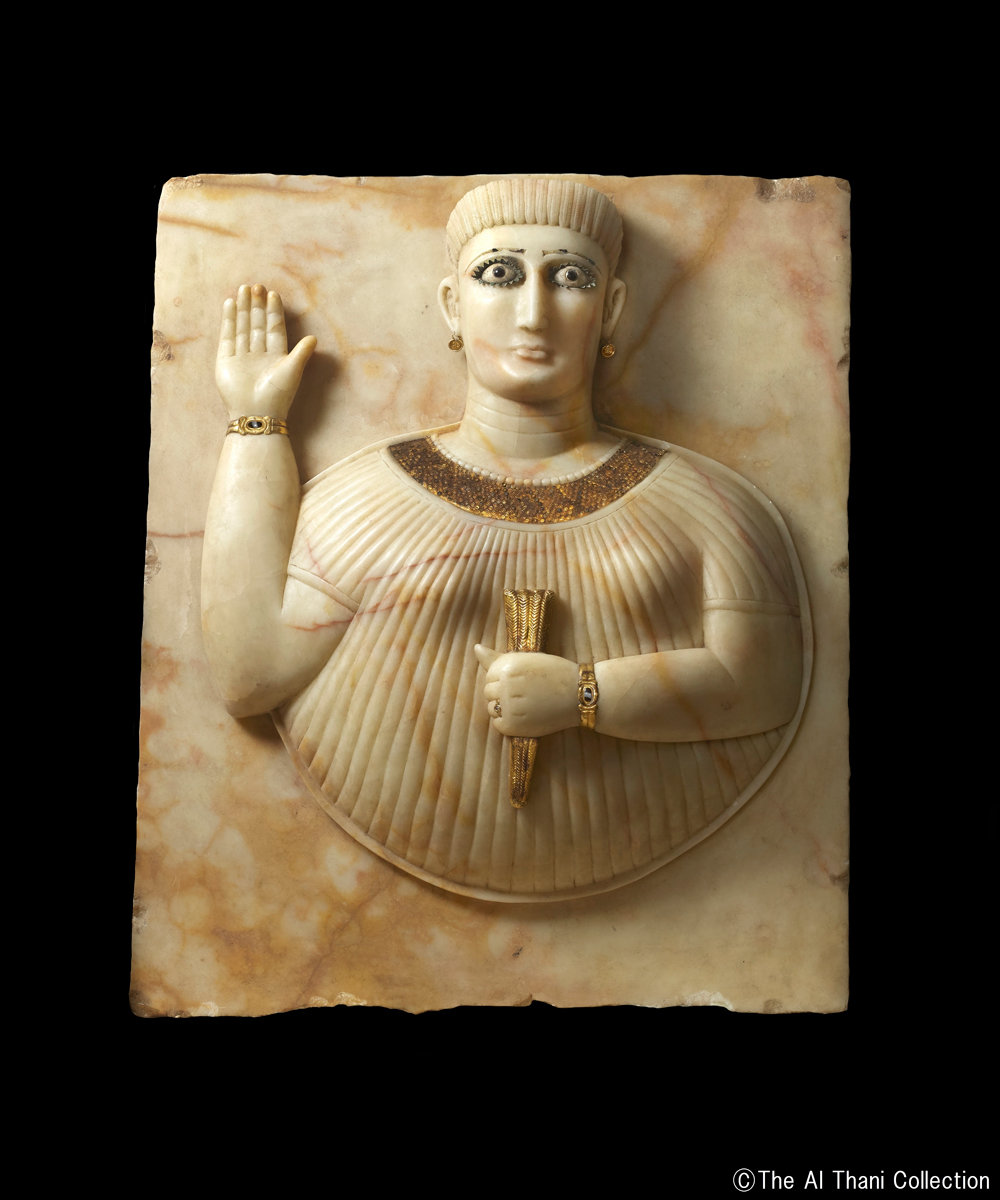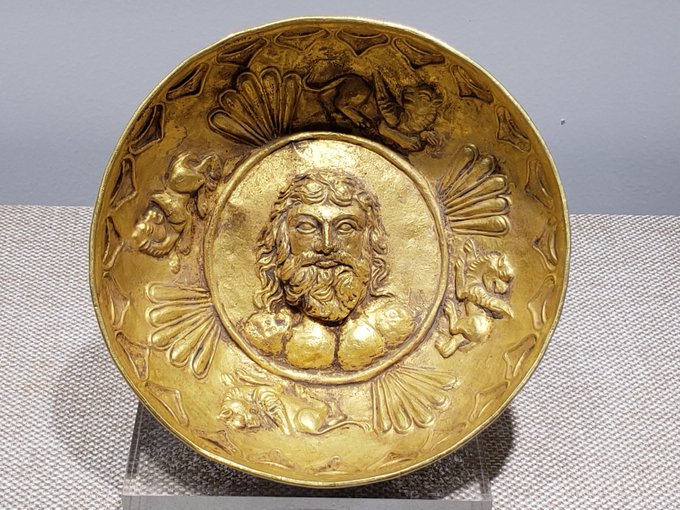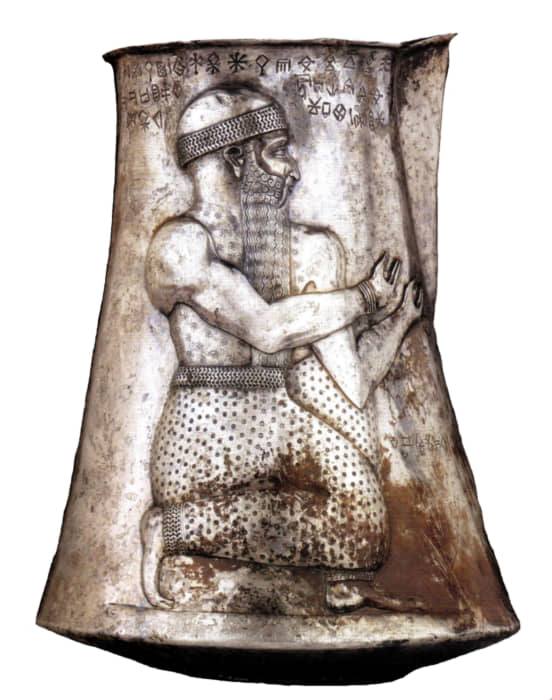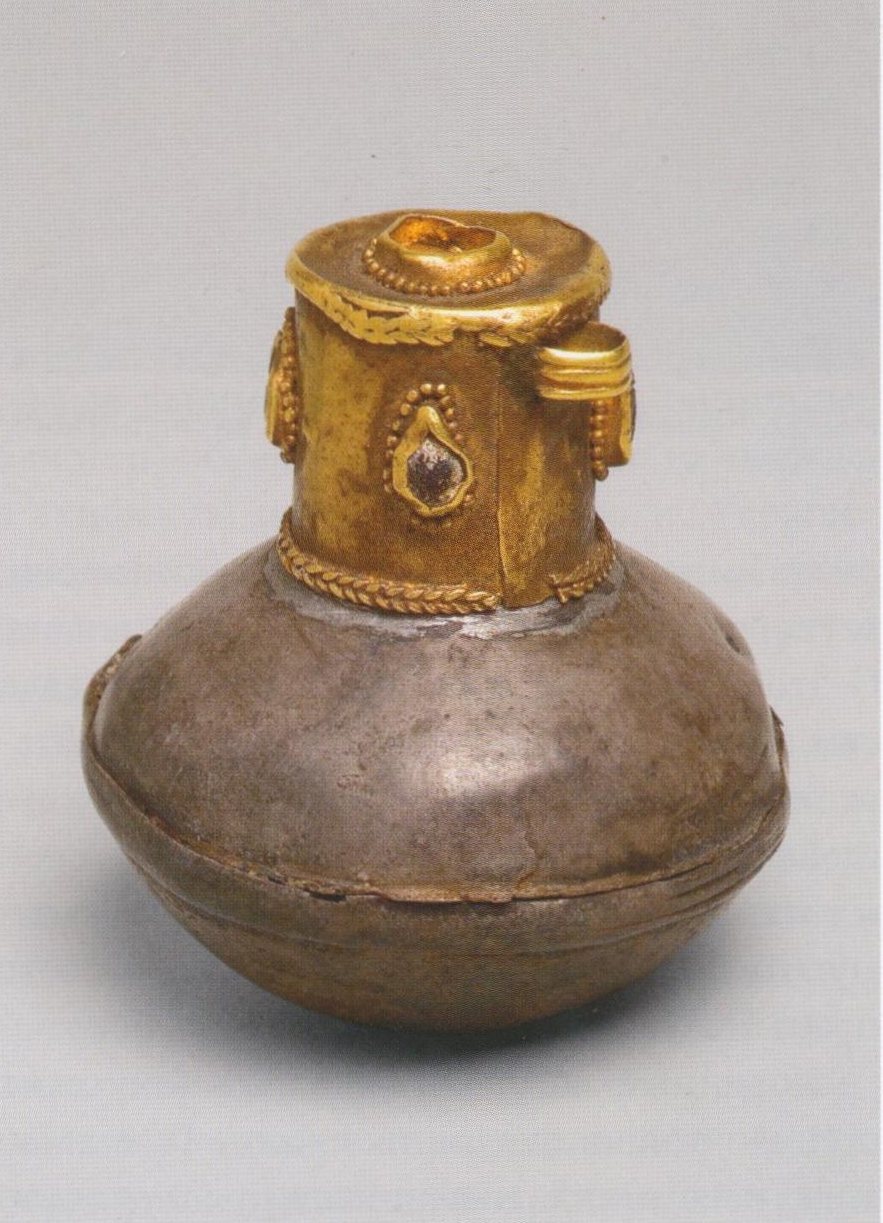The ancient Greek thymiateria were used in private and public rituals of the 7th century BCE – 4th century CE.
A thymiaterion (an incense burner) is firstly mentioned in the 5th century BCE in Herodotus’ Historia.
The word “thymiaterion” is derived from Greek θυμιάειν thymiaein and means “to smoke”. Is used for censers of ancient Greece, but also for Etruscan incense burners.
“This device was used solely with fire, charcoal or heated pebbles to burn aromatic compounds, incense and aromatic plants and flowers in particular. Thymiateria didn’t have any fixed shapes or sizes. In narrative sources, they were also named bomiskos, libanotis (libanotris), escharis, tripodiskos etc.” [Rusiaieva 2019]




17 main types of ancient Greek incense burners have been identified, that include more than 30 variants. Preferably it is a variety of bowls mounted on low or high cylindrical stands with stable round bases or tripods. There is some terminological confusion regarding the designation of the various constituent parts of incense. For example, the upper part of the censer, where hot coals are located, where incense grains or other incense are poured, may be called: bowl, cup, basin, plate, saucer, etc.
Marco Di Lieto names two main parts of the censer: the pelvis and the support-stand. The support is divided into a rod (stem or bush), solid or hollow, and a base. The upper part of the support always has a smaller diameter, the base – the largest. Sometimes the rod is connected to the base by a curved shoulder (Di Lieto 2005, pp. 360-361, [Rusiaieva 2019]).
Also in Greece, since the 7th century BCE there are more complex figurative supports of censers, for example an incense burner the bowl of which was supported by statuettes of goddesses (Nike, Artemis, Tihe, etc.) or other mythological characters. Many incense burners have cone-shaped lids with small holes for slow exit and scattering of fragrant smoke in the air. [Rusiaieva 2019]
“The Greeks, borrowing incense from the Persians and Phoenicians, began to use them from the 7th century BCE. Adapting incense to their traditions, they gradually spread it among the numerous inhabitants of ancient cities, along with aromatic substances. The fragrant scent accompanied the prayers of the Greeks to various gods, sacrifices and libations in sanctuaries, during religious festivals and processions, as well as at weddings and symposia, but much less during funeral rites. Many incense burners were dedicated as votive gifts to temples and placed in home shrines. However, images of special devices for smoking aromatic substances in ancient Greek art of the archaic period are relatively rare, although diverse in shape, height, decoration and materials (clay, bronze, silver, gold, stone).” [Rusiaieva 2019]
Early Hellenistic limestone relief of the Ionic order with an image of a thymiaterion and plant decoration preserved in the Kerch Historical and Cultural Museum Reserve (inv. no. 1050), was accidentally discovered in Panticapaeum in 1889.


A unique composition is carved on the front side of a low plate: a thymiaterion among acanthus scrolls, palmettes, and poppy and lily flowers. An incense burner consists of a pyramidal base and a high rod with discs and a bowl. [Rusiaieva 2020]
For a thymiaterion from Panticapaeum, the term bowl is used for the upper part of the incense burner, and the bases of individual precious metal incense burners, depending on the shape, are called trapezoidal stands or tripods. [Rusiaieva 2019]
They became common in the Hellenic cult practice starting from the 480s BCE and have prototypes in Etruscan bronzes of the late archaic period [see an example from The Met below].
“There is a link between the image of an acanthus transforming into other flowers and plants and the idea of eternal flowering. Lily and poppy flowers are chiefly considered to be attributes of the Eleusinian goddesses Demeter and Persephone, in whose cults floral thymiaterion with a flower-shaped (most frequently lily-shaped) bowl were used. It is assumed that the combination of a thymiaterion and large lily and poppy flowers in one composition has a symbolic motive conveying an olfactory feeling to the viewer. It may be an allusion to sacred gardens with fragrant flowers, where incenses are burnt in a thymiaterion. The relief is likely to have crowned the stele, adorned the entrance to the Sanctuary of Demeter or the sacred building in Panticapaeum.”[Rusiaieva 2020]
“Thymiaterion is located in the center of a wide bush of acanthus, with two mirror – reflected shoots and upward leaves and flowers. The plants are exquisite in pattern, with a hint of naturalism and simultaneous reincarnation. S-shaped curls of sprouts allegedly germinate through the prickly leaves of acanthus with a tip bent to the center of the composition, which is close to the lower disc of the thymiaterion. The sculptor highlighted the central vein of each leaf, the plate of which is divided into several segments by a curved edge. The written stems are continued by volute-like stems, which end in lowered semi-palmettes. From the acanthus stalk stretch up the flowers of the poppy, the cups of which are directed to the center, and tall flowers of lilies beveled and rounded at the top back edge.”
A rare image of metal devices with gilding is presented on the 4th century BCE oinochoe kept in the Pushkin’s Museum in Moscow. “On both sides of the golden tripod, mounted on a pedestal in the form of a Dorian column, are depicted two dancers – priestesses or participants in religious ceremonies in honor of various deities. In front of them are two identical gilded thymiaterion on a pyramidal base with a thin cylindrical rod with three disks. The upper bowls of the censer have clearly delineated crowns. The end of the skirt of one of the thyme materials is decorated in the form of elongated leaves or flower petals.” [Rusiaieva 2020]

Three golden Tartessian thymiateria, part of a group of six, called ‘Candlesticks of Lebrija‘ (Province of Sevilla, Andalusia, Spain).
Dated to the 7th century BCE.
At the National Archaeological Museum of Spain, Madrid.
Information thanks to Andrés Nadal [link]

Etruscan bronze thymiaterion, 6th century BCE
in the Met [link]

Marble thymiaterion with a lid, Magna Graecia, 4th century BCE.
in the Getty >> [link]
Incense burners of the Achaemenid / Persian type


Twin incense burners in stone relief from Apadana palace, Persepolis, Shiraz, Iran; c. 520–465 B.C.E.
Pictures taken “in situ” in 2002 by Shamekh H. [source]



The audience relief of Darius, the National Museum of Iran.
“In front of the emperor, one can see two incense – burners and behind them the chilliarch (commander of the Achaemenid army) is showing respect to the emperor.” [source]




- Incense burner of the Achaemenid type with a chain, found during illegal excavation of the Toptepe, İkiztepe and Aktepe Tumulus in the Güre Village of Uşak between 1965 and 1968. Made of silver, has dimensions: height 28.8 cm (stand 17.9 cm, cover 10.9 cm), diameter of cover 6.3 cm, total weight 221.48 g. Early 5th century BCE. Kept in the Usak Museum, Turkey.
The stand, bowl and cover were each hammered separately. The stand and a cover where once connected with a chain as it is shown on the Persepolis reliefs. The other end of the chain was attached to a ring visible at the end of the tail of a rooster that adorns the cover.
On the flare of the base is an inscription in Lydian which indicates that the name of the owner of the incense burner was Artimas.
[source]
2. From Ikiztepe near Usak [https://www.livius.org]

2a. Silver incense burner, found in Ikiztepe near Usak, dated to the 6th century BCE. Hight 28,8 cm.
Ankara, Museum of Anatolian Civilizations [link]

3. Made of silver, it is 31 cm high and weighs 511 g. Dated to the 6th century BCE.
Private collection [source]

4. Bronze incense burner in the Achaemenid style. Probably from Iran, late 6th – early 5th century BCE.


From the illegal excavation of the Toptepe, İkiztepe and Aktepe Tumulus in the Güre Village of Uşak. Kept in the Usak Museum, Turkey.
5. Bronze incense burner, probably Achaemenid period. Anatolia (Lydia?), 6th-5th century BCE.


The Menil Collection. Unpublished.
Photo: Melikian-Chirvani.
The chatra on a stupa is conceived as umbrella. [Prof. Peter Stewart https://twitter.com/PeterCNStewart]
In Buddhism and Hinduism the chatra (Sanskit: “parasol”) is an auspicious symbol, representing royalty and protection. [Dr. James Terry]



In The Met >> https://www.metmuseum.org/


Sotheby’s auction 2021 https://www.sothebys.com
“Private Asian Collection
A Stupa with Relics and Casket, Rock Crystal, Gold, Pearls, and Schist
Ancient Region of Gandhara, Kushan Period, 1st/2nd Century, Probably North-West Pakistan or Afghanistan
Height of taller 7¼ in. (18.4 cm)
The rock crystal stupa in three parts, surmounted by a golden chattra or parasol with tiny pearls suspended along the rim, a separate golden strip punched with Kharoshthi characters reading “Vakhanasa datakhasa”, or “Of Vakhana the Donor”, a golden rosette with a granulated surface and a small golden disc-shaped relic container. The ovoid stone casket with lid, the knop decorated with a recessed floral motif, a chevron pattern incised around the neck, traces of gilding adhering to the surface. “
“For a similar sized rock crystal stupa, see Isao Kurita, Gandharan Art II, the World of the Buddha, Japan, 2003, p. 264, pl. 796. For a similar schist casket see W. Zwalf, A Catalogue of Gandharan Sculpture in the British Museum, London, 199, p 339, pl. 644.”
Exhibited: Afghanistan, Une Histoire Millenaire, Musee Guimet, 2002.

1st century-3rd century, Kushan period Gandhara, Pakistan
crystal, gold, copper and pearls
Dimensions 28.0 cm
Accession number 287.2007.a-j
https://www.artgallery.nsw.gov.au/collection/works/287.2007.a-j/

National Museum in New Delhi, Acc. No. 48.3/44
After Kumar Abhijeet, Looking at Gandhāra:
“The stele [from Gandhara] shows people from different strata of the society are venerating and adoring the stupa.”

Bronze sculpture from the Phophnar hoard, 5th-6th century, Gupta style.
“The broad shoulders, the trivali (three folds on the neck) and the webbed fingers are marks of a great being. Buddha’s silver-inlaid, downcast eyes symbolize chitta-ekagrata i.e. concentration of mind. The parasol displays two maladharas who hold a floral wreath above the Buddha’s head. The inscription on the pedestal reads: “Deyadharmoyam- Nagachari Vira” i.e. ‘Gift of Nagachari Vira.'”
Source: National Museum in New Delhi [link]




https://www.academia.edu/resource/work/43961731
https://www.academia.edu/resource/work/43793125



- A Buddhist Incense Burner from Gandhara: Metropolitan Museum Journal, v. 39 (2004); Stone, Elizabeth Rosen
- Suggested Origin of the Chatra D.T. DEVENDRA https://www.jstor.org
- How to Read Buddhist Art; Behrendt, Kurt (2019) https://www.metmuseum.org
- Kumar Abhijeet, Looking at Gandhāra, HISTORIA I ŚWIAT, nr 4 (2015)
- Rusiaieva, M. V. 2019. On Ancient Greek Thymiaterion and Their Purpose (in Ukrainian) / Русяєва, M. 2019. Основні відомості про давньоеллінські фіміатерії та їх призначення [academia.edu]
- Rusiaieva, M. V. 2020. Early Hellenistic relief depicting a thymiaterion from Panticapaeum (in Ukrainian, with abstract in Еnglish) / Русяєва, М. В. 2020. Ранньоелліністичний рельєф із зображенням тиміатерія з Пантикапея [academia.edu]
- IRANIAN ART: ACHAEMENID DYNASTY The International Achaemenid Style, A. Souren Melekian-Chirvani https://www.cais-soas.com
- The Lydian treasure http://www.about-turkey.com/karun/burner.htm
- Karun’s Treasure https://www.usakegemtv.com.tr/karun-hazineleri/76/
- https://www.mygazete.com/haberler/kultur-sanat/karun-hazinesinin-basina-neler-geldi/412572/
- http://elamankrestomatia.blogspot.com/2014/01/birger-kaipiainen-harri-kalha-osa-2.html?m=1
- Interesting website >> https://www.incense-burner.com/index.php
